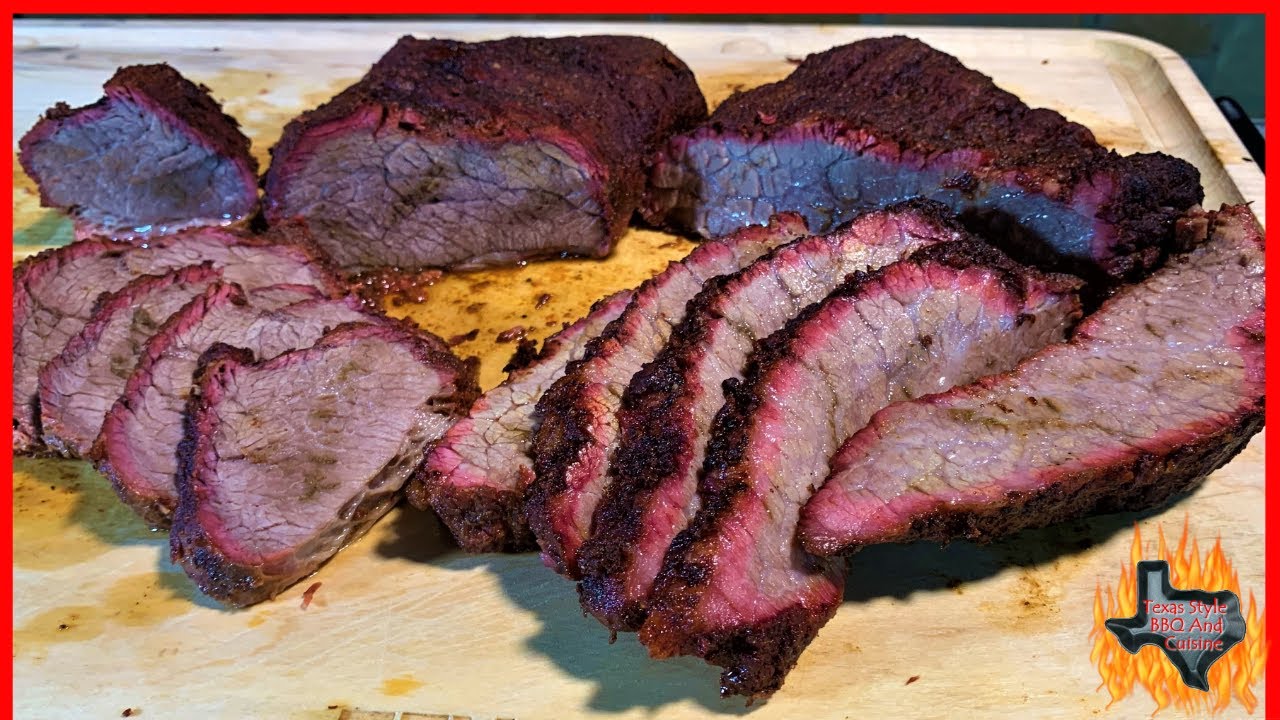Understanding Tri Tip And Brisket

Tri tip and brisket are two well-known cuts of beef that offer unique flavors and textures. Tri tip, also known as a triangle roast, comes from the bottom sirloin of the cow and offers a leaner, beefier taste. It has a firmer bite, similar to traditional steak. On the other hand, brisket comes from the chest area of the cow and is renowned for its intense smoky flavor and unparalleled tenderness. It requires a longer cooking time to break down the tough connective tissues, resulting in a melt-in-your-mouth texture. Tri tip and brisket have their own distinct qualities that make them popular choices for BBQ enthusiasts and steak lovers alike.
Tri Tip Vs Brisket: Overview And Popularity
When it comes to BBQ favorites, both tri tip and brisket hold a special place in the hearts of meat lovers. Tri tip has gained popularity for its lean and beefy flavor, which is reminiscent of a juicy steak. It has become a go-to choice for grilling enthusiasts looking for a tender and flavorful cut. On the other hand, brisket has earned its reputation for its rich smoky taste and unmatched tenderness. Its slow-cooking process creates a melt-in-your-mouth texture that has made it a staple in traditional BBQ cuisine. Whether you prefer the firmer bite of tri tip or the succulent tenderness of brisket, both cuts offer a unique and delicious experience on the grill.
Key Differences In Cooking Techniques
When it comes to cooking tri tip and brisket, there are key differences in the techniques used. Tri tip is typically cooked using high heat grilling methods, such as searing or direct grilling, to get a nice crust on the outside while keeping the inside tender and juicy. On the other hand, brisket requires slow and low cooking, usually through smoking or braising, to break down the tough connective tissues and achieve that melt-in-your-mouth texture. The long cooking time allows the flavors to develop and intensify, resulting in a rich and smoky taste. So, depending on the cut you choose, be prepared to adjust your cooking technique accordingly to achieve the best results.
Tri Tip: Flavor And Texture

Tri tip offers a unique flavor and texture that sets it apart from other cuts of beef. Its flavor profile is often described as rich, beefy, and slightly gamey. The texture of tri tip is firm yet tender, with a moderate amount of marbling that adds juiciness to each bite. When cooked properly, tri tip develops a beautiful crust on the outside while remaining tender and juicy on the inside. This combination of flavors and textures makes tri tip a favorite choice for steak lovers who appreciate a leaner, beefier taste.
Tri Tip: Taste Profile And Tenderness
Tri tip offers a unique flavor and texture that sets it apart from other cuts of beef. Its flavor profile is often described as rich, beefy, and slightly gamey. The texture of tri tip is firm yet tender, with a moderate amount of marbling that adds juiciness to each bite. When cooked properly, tri tip develops a beautiful crust on the outside while remaining tender and juicy on the inside. This combination of flavors and textures makes tri tip a favorite choice for steak lovers who appreciate a leaner, beefier taste.
Tips For Preparing And Grilling Tri Tip
To fully enjoy the flavors and tenderness of Tri Tip, it is important to prepare and grill it properly. Here are some tips to help you achieve a delicious result:
- Seasoning: Start by generously seasoning your Tri Tip with a dry rub or marinade of your choice. Allow it to marinate for at least 1-2 hours or overnight for maximum flavor penetration.
- Prepping the grill: Preheat your grill to medium-high heat. Make sure the grates are clean and well-oiled to prevent sticking.
- Indirect heat method: To cook the Tri Tip evenly, use the indirect heat method. Place the meat on the cooler side of the grill and close the lid. This allows the meat to cook slowly and evenly.
- Searing: After the initial cooking, move the Tri Tip to the hot side of the grill to get a nice sear and develop a caramelized crust. Sear each side for about 2-3 minutes.
- Resting: Once the Tri Tip reaches your desired level of doneness, remove it from the grill and let it rest for about 10 minutes. This allows the juices to redistribute and makes the meat more tender.
- Slicing: To maximize tenderness, slice the Tri Tip against the grain. This helps break up the muscle fibers and makes each bite more enjoyable.
Remember, cooking times may vary depending on the thickness of your Tri Tip, so use a meat thermometer to ensure it reaches the desired internal temperature of 135-140°F (medium-rare to medium).
By following these tips, you can create a perfectly grilled Tri Tip that is flavorful, tender, and sure to impress your guests. Enjoy!
Brisket: Flavor And Texture

Brisket is well known for its distinct flavor and melt-in-your-mouth texture. The flavor of brisket is rich, smoky, and meaty, thanks to the long smoking process it undergoes. The slow cooking method allows the flavors to develop and infuse into the meat, creating a savory taste that is hard to resist. As for the texture, brisket is incredibly tender and moist. The collagen and fat within the meat slowly render down during cooking, resulting in a tender and succulent bite. Whether sliced or pulled, brisket offers a satisfyingly tender and flavorful experience with every bite.
Brisket: Taste Profile And Consistency
Brisket offers a taste profile that is rich, smoky, and deeply savory. The long smoking process infuses the meat with a distinct flavor that is hard to resist. The slow cooking method allows the flavors to develop and meld together, resulting in a tender and succulent bite. The consistency of brisket is melt-in-your-mouth tender, thanks to the collagen and fat that slowly render down during cooking. Whether sliced or pulled, the texture is incredibly satisfying and luscious. Brisket delivers a flavor and consistency that is guaranteed to please BBQ enthusiasts and meat lovers alike.
Methods For Smoking And Seasoning Brisket
When it comes to smoking and seasoning brisket, there are a few methods that can ensure you achieve the best flavor and tenderness. One popular approach is to season the brisket with a dry rub consisting of a blend of spices such as kosher salt, black pepper, paprika, garlic powder, and onion powder. The dry rub should be generously applied to all sides of the brisket and allowed to sit for at least an hour to allow the flavors to penetrate the meat.
In terms of smoking, many pitmasters prefer using a combination of charcoal and wood chips for the best results. The charcoal provides heat and a steady temperature, while the wood chips add that signature smoky flavor. The brisket should be cooked over indirect heat for several hours, until it reaches an internal temperature of around 195-205°F. This slow and low cooking method allows the collagen in the meat to break down, resulting in a tender and juicy brisket.
It’s important to note that different types of wood chips can impart different flavors to the brisket. Popular choices include hickory, mesquite, apple, and cherry wood. Each has its own unique aroma and taste that can complement the rich flavors of the brisket. Experimenting with different wood combinations can help you find your preferred smoky profile.
During the smoking process, it’s important to maintain a consistent temperature and to periodically baste the brisket with a mop sauce or a mixture of apple juice and vinegar. This not only helps to keep the meat moist but also adds additional flavor and enhances the bark, which is the caramelized crust that forms on the exterior of the meat.
Once the brisket reaches the desired internal temperature and has a rich mahogany color, it should be removed from the smoker and allowed to rest for at least 30 minutes. This resting period allows the juices to redistribute and ensures a more succulent and flavorful final product.
Overall, the methods for smoking and seasoning brisket require patience and attention to detail. But the end result is a mouthwatering piece of meat that is sure to impress. Whether you opt for a traditional dry rub or experiment with different wood flavors, smoking and seasoning brisket is a labor of love that is well worth the effort.
Tri Tip Vs Brisket: Nutritional Value

When comparing the nutritional value of Tri Tip and Brisket, it’s important to consider the composition of these cuts. Tri Tip is a leaner cut of meat with less marbling, making it lower in overall fat content. On the other hand, Brisket is a fattier cut, known for its marbling and rich flavor. As a result, Brisket tends to have a higher fat content compared to Tri Tip. However, both cuts are excellent sources of protein and provide essential vitamins and minerals. When it comes to choosing between Tri Tip and Brisket, it ultimately comes down to personal preference and dietary needs.
Comparing The Nutritional Content Of Tri Tip And Brisket
When it comes to the nutritional content, Tri Tip and Brisket have some differences. Tri Tip is a leaner cut of meat, which means it generally has less fat content compared to Brisket. However, Brisket is known for its rich flavor that comes from the marbling, which is the fat running through the meat. This means that Brisket may have a higher fat content compared to Tri Tip. Both cuts are excellent sources of protein and provide essential vitamins and minerals. Ultimately, the choice between Tri Tip and Brisket comes down to personal preference and dietary needs.
Health Benefits And Concerns Of Consuming Each Cut
When it comes to the health benefits and concerns of consuming Tri Tip and Brisket, there are a few things to consider. Tri Tip is known for being a leaner cut of meat, which means it is generally lower in fat content compared to Brisket. This can be beneficial for individuals who are watching their fat intake or following a low-fat diet. Additionally, Tri Tip is a great source of protein and contains essential vitamins and minerals. On the other hand, Brisket is known for its rich flavor, which comes from the marbling within the meat. While marbling adds flavor, it also means that Brisket tends to have a higher fat content. This can be a concern for individuals who need to limit their fat intake or have certain health conditions. It’s important to balance your intake of both cuts and consider your individual health goals and dietary needs.
Serving Tri Tip And Brisket

When it comes to serving Tri Tip and Brisket, there are a few key considerations. For Tri Tip, it is best to slice it against the grain to ensure tenderness. Serve it on a platter with a sprinkle of salt and pepper to enhance the natural flavors. As for Brisket, it is typically served sliced and accompanied by barbecue sauce on the side. Brisket pairs well with classic sides such as coleslaw, baked beans, and cornbread. The presentation of both cuts is important, so take your time to arrange them beautifully on the plate to impress your guests. Whether it’s a casual cookout or a special occasion, serving Tri Tip and Brisket will surely be a crowd-pleaser.
Best Side Dishes And Accompaniments For Tri Tip And Brisket
When serving Tri Tip and Brisket, it’s important to choose the right side dishes and accompaniments to complement their robust flavors. For Tri Tip, consider serving it with classic sides like mashed potatoes, roasted vegetables, or a fresh green salad. These options provide a balance to the richness of the steak. As for Brisket, it pairs perfectly with traditional BBQ sides such as coleslaw, baked beans, and cornbread. These dishes enhance the smoky flavors and add a touch of sweetness and tanginess to the meal. Don’t forget the barbecue sauce on the side for that extra kick of flavor. Whether you choose Tri Tip or Brisket, these side dishes will elevate your BBQ feast.
Tips For Presenting And Serving These BBQ Favorites
When it comes to presenting and serving Tri Tip and Brisket, there are a few tips to keep in mind. Firstly, let the meat rest for a few minutes after cooking to allow the juices to redistribute and ensure maximum tenderness. Secondly, slice the Tri Tip against the grain to optimize tenderness, while for Brisket, slice it across the grain for melt-in-your-mouth succulence. Lastly, present your BBQ favorites on a platter, garnished with fresh herbs or a sprinkle of smoked sea salt to add visual appeal. These tips will enhance the dining experience and make your BBQ feast even more memorable.
Conclusion

In the epic showdown between Tri Tip and Brisket, there is no clear winner, only two culinary titans each with their distinct character and charm. Tri Tip offers a juicy and tender texture with a robust flavor profile, making it perfect for grilling enthusiasts. On the other hand, Brisket boasts a melt-in-your-mouth consistency and a deep, smoky taste that is perfect for slow cooking and smoking. Ultimately, the choice between Tri Tip and Brisket comes down to personal preference and the desired cooking technique. Whichever cut you choose, both Tri Tip and Brisket will satisfy your BBQ cravings and leave you with a memorable dining experience.
Final Thoughts On Tri Tip Vs Brisket: Which Is The Ultimate BBQ Favorite?
After exploring the differences and unique qualities of Tri Tip and Brisket, it’s clear that choosing the ultimate BBQ favorite ultimately comes down to personal preference. Tri Tip offers a juicy and tender texture with a robust flavor profile, making it perfect for grilling enthusiasts. On the other hand, Brisket boasts a melt-in-your-mouth consistency and a deep, smoky taste that is perfect for slow cooking and smoking. Both cuts have their own charm and appeal, so whether you prefer the boldness of Tri Tip or the rich flavors of Brisket, you can’t go wrong with either choice.
Recipes And Cooking Tips For Both Cuts
When it comes to cooking Tri Tip and Brisket, there are a plethora of delicious recipes and helpful tips to ensure a successful BBQ experience. For Tri Tip, one popular recipe is a classic Santa Maria-style Tri Tip, which involves marinating the meat in a flavorful blend of spices and herbs before grilling it to perfection. Another favorite is Tri Tip steak tacos, where the meat is thinly sliced and served in warm tortillas with fresh salsa and toppings. As for Brisket, a mouthwatering recipe is Texas-style smoked Brisket, which entails slow-cooking the meat with a dry rub and hickory wood chips for that authentic smoky flavor. Additionally, Brisket can be used to make decadent sandwiches, sliders, or even chili. Whatever recipe you choose, make sure to prepare the meat properly, follow cooking times and temperatures, and let it rest before slicing. Happy grilling!
FAQ About Tri Tip Vs Brisket: Exploring Two BBQ Favorites
Q: What is Tri Tip and Brisket in the context of BBQ?
A: Tri Tip and Brisket are both popular cuts of beef used in BBQ cooking. Tri Tip comes from the bottom sirloin of the cow, while Brisket is taken from the chest of the cow.
Q: How do the cooking methods differ between Tri Tip and Brisket?
A: Tri Tip is typically cooked faster at higher temperatures, making it a quicker option compared to Brisket, which is known for its low and slow cooking method.
Q: Which cut is more tender, Tri Tip or Brisket?
A: Tri Tip is generally considered to be more tender compared to Brisket due to its lower fat content and shorter cooking time.
Q: What are the flavor profiles of Tri Tip and Brisket?
A: Tri Tip is known for its beefy flavor with a slight smokiness, while Brisket has a richer, fattier flavor profile that comes from its longer cooking process.
Q: Can Tri Tip and Brisket be used interchangeably in recipes?
A: While both cuts can be delicious in their own right, they have different textures and flavors, so they may not always be suitable substitutes for one another in recipes.

The Stone’s Sports Grill and Bar was Established on December 1, 2021. The Stone is a Sequel to another restaurant called Cornerstone’s First Edition in Tucumcari, NM. This particular venue is located on the Southeast side of Colorado Springs. The Stone is Wide Open. We have a large dance floor, multi-level stage, pool room, (5) dart boards, and a bar with a large selection of wine spirits and brews.